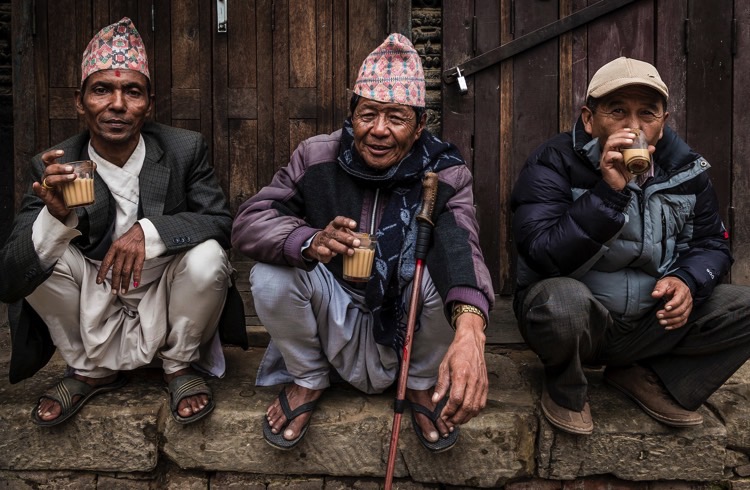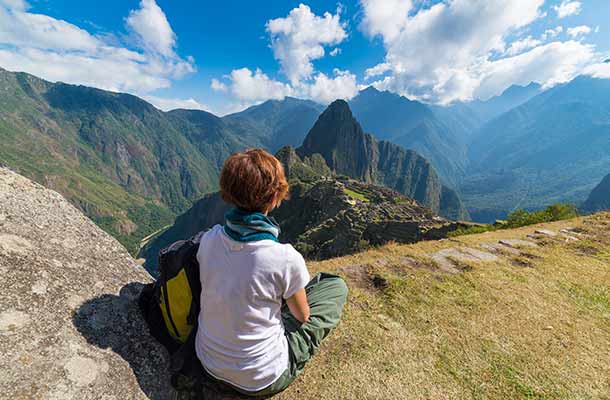Portrait Equality: Portraits in Peru
Jeff McAllister is a traveller, blogger and cyclist with an interest in human rights and science journalism. When he first started shooting portraits, his hope was to draw the emphasis away from his own story and place it onto someone else’s.
 Photo © iStock/hadynyah
Photo © iStock/hadynyah
“I’m not simply asking someone to share their story – I’m showing them how much I respect it – giving them agency to tell it in the way they best see fit and allowing them to take a piece of the way I see it, home.” - Jeff
The Inca heartland has always fascinated Jeff, as it is a country split into three by jungle, coast and mountain and he wanted to get a taste of all three so he took Sanchez the World Nomads camera along on his journey through Peru.
The difference between a professional and a semi-professional camera can be a single grain of sand. I slapped my D7000 against my sticky palm, conjuring chuckles from the family in front of my lens as I attempted to dislodge whatever had frozen my non-weather sealed scroll wheel in place. In any other context this would have been great—it’s amidst the temporary trance of laughter that a man reveals his true self—but right now I was worried that my trusty DSLR was on its final frames, mid-assignment, and in a corner of the world where her replacement would be far from easy. I shook the camera a few times to no avail. Then, before exhausting the smiles in front of me, switched my focus from single-point to centre and stopped down to make sure the detail I’d originally intended to compose around wasn’t thrown beyond the new depth of field. I snapped a frame, then handed the body off to the family patriarch, Victor, to share. I felt surprisingly nervous as they eyed up the LCD. Did it live up to their expectations, having been shown samples of my previous work?
The entire reason I’d come to Peru was to take portraits. In fact, I’d been sent here to shoot images of the people of Northern Peru’s Piura region—the province that receives the least amount of funding from the tourism board—which in my opinion (and those of the grant organisation, Passion Passport, who’d sponsored the trip) would assure for a unique set of images if nothing else. It was my intention to document the less-advertised corner of the country—one devoid of the felted hats, chakra necklaces, and disked-lips that adorn the pages of National Geographic and the covers of Lonely Planet. In my application, I’d even written that my goal was to provide a platform for the residents of the region to show-off their homeland before a for-profit publication came to town with pre-determined motives. But still, from the moment I penned those words, something sat uneasy with me. Weren’t these altruistic movies all a bit presumptuous? I couldn’t help but feel an underlying theme of voyeurism lurked ominously at the heart of my project. They call it “taking a picture” after all.
“Portrait photography is unique among the documentary arts. At its purest, it’s a mutually consensual act. The photographer brings his perspective to an image. The subject, the world within her eyes.” - Jeff
Portrait photography is unique among the documentary arts. At its purest, it’s a mutually consensual act. The photographer brings his perspective to an image. The subject, the world within her eyes. The end result is a single-frame saga: the 1/150-second summary of a meeting, days, months, years ago. Although this has always been the intention of my work, the balance between these roles isn’t always so cut and dry beyond the socio-economic bubble of the first world. The iPhone may be consuming the consumer camera in downtown Manhattan but I didn’t see either device during my week surfing sand-caked mini-buses between the fishing villages North of the Sechura. Of the eight-billion people in the world, many rely on grainy candy-bar camera phones to capture their memories (I’ve posed for many!) More still don’t even have that luxury. And in this type of environment the power dynamics of a portrait session are one sided—many will only ever see themselves on one side of the lens. The subject is expected to comply with little more than a few minutes in front of an LCD screen as incentive. Unless…
In the dust-baked town of Yacila I missed two deadlines due to non-existent Internet. My cell phone struggled to make calls, let alone transmit images. For the first time in weeks, whenever I met a local person in the street I wasn’t invited to connect on Facebook. Wandering in one night from the marzipan dunes of desert, I chanced upon a fisherman I shared a bus with earlier in the day. Victor, he introduced himself. He’d spent the last ten hours navigating the chop of the Pacific on little more than a raft with an inlayed oar. “Come have a beer with me and my family,” he said in Spanish and when I suggested I grab a few extra Crystals to pay for the hospitality, he insisted there was no need.
Victor’s house was a concrete rectangle surrounded by tangled fishing nets. An unfinished wall allowed air to flow through from the veranda upon which three men sat crossed legged on the sticky floor. The eldest signalled to me to let him take my bag then winced when he felt the weight. “It’s full of glass.” I tried to say in my rusty-if-still-there grade school Spanish. Then, realising it didn’t translate: “I’m a photographer.” I flipped the brass buckle and removed my road-worn D7000 and the collection of business card sized portraits I carry with me. Immediately the family lined up. And then my trusty D7000 failed to perform.
“He’d [Victor] spent the last ten hours navigating the chop of the Pacific on little more than a raft with an inlayed oar. “Come have a beer with me and my family,” he said in Spanish and when I suggested I grab a few extra Crystals to pay for the hospitality, he insisted there was no need.” - Jeff
While Victor and the eldest brothers used one of the few working buttons to scroll through my images, I tried to explain my project to his wife. After language failed once more, I resorted to hand-gestures and then finally the May issue of National Geographic in my bag.
She flipped through a story on food security, settling on a series of portraits taken by Jim Richardson during the Andean potato harvest a couple hundred kilometres South. “I’m not THAT good.” I laughed. “But here, let’s take one more”. I removed the white instant camera from my bag. “Uno mas.” I sung the one sentence of Spanish I’d used consistently since a month-long exchange in Cuernavaca, Mexico years ago. This time I spent a few minutes composing the exact shot I wanted. I fired off one for each brother—assuming they represented respective families. Then, once the images had exposed, handed them off. This time, the family’s expressions were less ambiguous. When the first image made its rounds, the youngest, glowing, attempted to hand it back. “This isn’t my portrait,” I said, spelling each word out with my hand. “It’s yours.”
About the Author
Jeff McAllister spent the first few years of his adult life mixing solutions in a lab. Now he spends most of his time studying the chemistry between people and the world they inhabit. He prefers couch surfing to a hotel room, a bar-stool to a table for one. And when not hiking, surfing or stumbling through a new local sport, he is walking the streets of a metropolis taking portraits or looking for someone to sit down with to share a story.
He has done five big expeditions since 2009 and for one reason or another; Peru has always been the country that had got away until this trip. Jeff feels that travel by its nature is governed by privilege. He has been lucky enough to see the world, gain experiences, write and photograph and share these experiences with an audience.
See more of Jeff’s photos from the journey on the Portrait Equality website.
About Portrait Equality
Portrait Equality is a Sydney and San Francisco based not-for-profit project that loans out instant cameras to photographers travelling in developing nations and remote communities so they can provide family portraits to those they meet. The goal is to give photos, not just take them, and perhaps give a villager their first family picture.
Related articles
Simple and flexible travel insurance
You can buy at home or while traveling, and claim online from anywhere in the world. With 150+ adventure activities covered and 24/7 emergency assistance.
Get a quote

No Comments